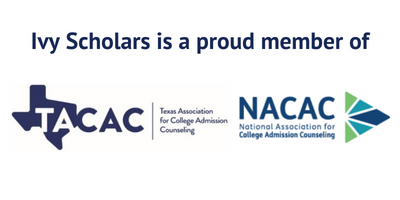When newspapers talk about college acceptance rates, they often use quite dramatic language. Rates are described as plunging, or falling, or sharply declining, conjuring images of significant changes from year to year. Indeed, we’ve used this language ourselves on occasion; it paints a clear mental image, and is highly evocative, which are things writers tend to enjoy, especially journalists.
That said, how true are these claims? How much do acceptance rates really vary, year over year? This is a good question, and one with some surprising answers. In this article, we’re going to look at how acceptance rates have changed at a number of top colleges, and what factors influence these changes. Let’s get started!
Changes in Acceptance Rates: Data
So before we analyze how these rates change, we’re going to need to be able to visualize these changes. First, here’s a table with acceptance rates over time at a selection of top universities:
| 2024-25 | 2023-24 | 2022-23 | 2021-22 | 2020-21 | |
| Brown | 5.7 | 5.2 | 5.1 | 5 | 5.5 |
| Columbia | 4.3 | 3.8 | 3.9 | 3.7 | 3.9 |
| Dartmouth | 6 | 5.3 | 6.2 | 6.4 | 6.2 |
| Duke | 4.8 | 5.1 | 6 | 6.2 | 5.7 |
| NYU | 7.7 | 8 | 8 | 12.5 | 12.8 |
| Northwestern | 7 | 7.5 | 7 | 7.2 | 6.8 |
| Rice | 7.8 | 7.5 | 7.7 | 8.7 | 9.3 |
| Yale | 4.6 | 3.7 | 4.4 | 4.6 | 4.6 |
This is perhaps not the easiest way to visualize this data, so here it is in chart form as well:
So that’s an interesting bit of data. This isn’t every top school of course, but the chart was already quite crowded; our goal was to include enough schools to give an overview of patterns, but not so many that the data was drowned out by noise. To add another point of comparison, here is the same data for a number of top public schools:
| 2024-25 | 2023-24 | 2022-23 | 2021-22 | 2020-21 | |
| Georgia Tech | 12.7 | 14 | 16 | 17.1 | 18.3 |
| UC Berkeley | N/A | 11 | 11.6 | 11.4 | 14.5 |
| UCLA | N/A | 8.9 | 8.8 | 8.6 | 10.8 |
| University of Michigan | N/A | 15.6 | 17.9 | 17.7 | 20.2 |
| UNC Chapel Hill | N/A | 15.3 | 18.4 | 16.9 | 19.2 |
| UT Austin | N/A | 26.6 | 29.1 | 31.4 | 28.8 |
Unfortunately, most of these schools have not yet released their admissions statistics for this year at all, with the notable exception of Georgia Tech. This does give us slightly less data to work with, but we can still see some patterns in it. Again, this is not the easiest way to compare this data, so here’s a chart:
So now that we have all of this data, we come to the important question of what any of it really means.
What College Admissions Data Tells Us
Looking at all of this data, two things stand out immediately:
- Acceptance rates do fluctuate over time
- They usually don’t change very much year to year
There are a few notable outliers; NYU dropping four and a half points from 2021-22 to 2022-23 being the biggest. Why was there such a drop? According to the student newspaper, the impacts of the ongoing Covid pandemic were the biggest contributor. Other universities saw shifts in this time, NYU’s is simply the largest on these tables. Outside of that, however, admissions seem relatively stable year to year. There are changes yes, but usually by around a single percentage point at most. These should be marked, but don’t necessarily seem like something to get excited about.
There are broader trends that can be seen; overall all acceptance rates are down on average at the public universities surveyed over the past five years; at private colleges there have been slight declines; but less of an overall downward trend, with instead more fluctuation in rates.
We believe in large part that this is because many of these elite private schools have nowhere else to go. Once your acceptance rate is below 5%, as is the case with Columbia and Yale, then how much more can it really drop? Now, things may change dramatically tomorrow, but one of the key takeaways we are seeing in this data is that there does seem to be a floor to how low admissions rates can go.
The Difference Between Public and Private Colleges
There are clearly different trends between public and private universities in this data; though all are top ranked programs. The most immediately apparent is that the public schools have higher acceptance rates than the private ones on average. UCLA is the closest, but even it falls far short of the competitiveness of Yale or Columbia.
This is not because these schools are any less academically gifted, but because of the sheer number of students they admit. Public schools enroll very large classes, and have student bodies numbering in the tens of thousands. There are some large private colleges, notably NYU, but most are far smaller than their public counterparts. They simply have fewer spaces for students, and thus almost inevitably end up with lower acceptance rates than peer public institutions.
Public universities are also seeing an uptick in applicants in recent years. There are likely multiple factors behind this. Slightly more students are applying to college overall, more students are considering flagship state schools as an alternative to private universities, and more international students are coming to the US.
Finally, acceptance rates are calculated based on the size of your applicant pool and how many you accept. This is math, but also explains why variations are so small in many private university admissions rates. When you have tens of thousands of applicants, a shift of a few thousand, while seemingly important, transforms into mere noise in the data. The larger the percentage of students a university admits, the bigger an impact a change in application rates makes.
Final Thoughts
So what does any of this mean for you? First, that journalists are there to report the news, but they also need to sell newspapers (or get clicks), and headlines about college acceptance rates staying pretty much the same don’t really do either of those things. Now, to be fair, college acceptance rates are at historic lows on average, but this wasn’t (and isn’t) the kind of change that happens overnight. This has been a long and steady shift of applications strategies and demographic trends that brought us to where we are today.
Some colleges are more volatile than others when it comes to changes in acceptance rates, but top colleges have been relatively stable over the past five years. This doesn’t mean they will be stable forever, but that without another incredible shakeup like the Covid pandemic, we don’t anticipate any radical shifts in acceptance rates at top colleges.
That said, where admissions rates have settled happens to be in the low single digits, which means getting into one of these colleges is as competitive as ever. If you are looking for help with your own applications, or guidance as you navigate this incredibly stressful time, then Ivy Scholars can help; schedule a free consultation today to learn how. We have a long experience working with students to perfect their applications to top colleges, and we’re always happy to hear from you.








